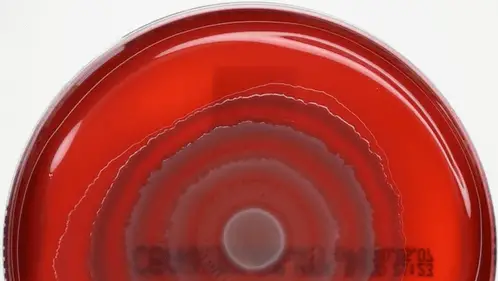Summary :
◉ What is Proteus mirabilis?
Proteus mirabilis is a ubiquitous bacterium, naturally present in the environment and in the human digestive tract.
It is a Gram-negative bacillus that belongs to the family Morganellaceae and the tribe Proteeae. It is characterized by its high motility, its urease activity and its very marked fishy odor.
Proteus mirabilis is commonly associated with complicated urinary tract infections, especially those associated with catheter use.

◉ How is Proteus mirabilis transmitted?
Proteus mirabilis is found in abundance in soil, sewage and is part of the intestinal flora of humans and many other mammals.
The bacterium is mainly spread by direct contact with infected people, contaminated objects and surfaces or by ingesting contaminated food.
It has the ability to elongate and secrete polysaccharide when in contact with solid surfaces, making it extremely mobile on objects such as medical equipment.
◉ Clinical Manifestations
Proteus mirabilis is one of the opportunistic agents encountered in various clinical samples and can cause various community-acquired or nosocomial infections.
it is frequently associated with urinary tract infections: urethritis, cystitis, or pyelonephritis in particular with the use of catheters.
Proteus mirabilis is also known to be one of the bacterial species that can cause kidney stones. This bacteria can produce an enzyme called urease which breaks down urea into ammonia. The latter can combine with magnesium and calcium in the urine to form crystals and then turn into kidney stones (apatite and struvite).
Infections of other organs are possible but much less common, such as peritonitis, chronic otitis media, arthritis, infections of the biliary tract or gastrointestinal tract, wound infections, sepsis and pneumonia.
◉ Classification and Taxonomy
According to NCBI Taxonomy Browser, The species Proteus mirabilis belongs to the order Enterobacterales, the family Morganellaceae and the genus Proteus.
First described by G. Hauser in 1885:
- The name "Proteus" comes from Greek mythology, where Proteus was a shape-shifting sea god.
- Mirabilis means "incredible, wonderful, remarkable" in Latin.

◉ Bacteriological Characters and Identification
Proteus mirabilis is a small, highly motile, polymorphic Gram-negative bacillus that measures approximately 0.4 to 0.8 μm wide and 1 μm long. These bacteria, optional aero-anaerobic, can easily grow on ordinary microbiological culture media ( BHIB, soy trypticase, nutrient agars).
- Mobile by peritrichous ciliature
- ONPG: negative.
- It ferments glucose, glycerol, tartrate, trehalose and xylose.
- Lactose: no fermentation.
- Gas production: positive.
- H2S: positive.
- Indole test : negative
- VP (Voges-Proskauer) test : negative
- Methyl red and Nitrate reduction : negative.
- ADH and LDC: negative.
- ODC: positive.
- Urea hydrolysis(Urease) : positive
- Production of enzymes: Lipase, Gelatinase, Phenylalanine deaminase (PDA) and tryptophan deaminase (TDA).
- Citrate test : positive
- Oxidase test: negative
- Catalase test : positive

API 20E Proteus mirabilis
- On TSI agar : yellow butt, red slant with or without blackening of the middle (H2S).
- On MacConkey agar : transparent (lactose negative) colonies.
- On Hecktoen agar : colonies are salmon or blue with or without a black center.
◉ Antibiotic resistance and Treatment
P. mirabilis has intrinsic resistance to polymyxins (colistin), nitrofurans, tigecycline and tetracycline, but is generally susceptible to β-lactams (Group 0), aminoglycosides, ciprofloxacin and trimethoprim-sulfamethoxazole.
Note: The inhibition diameters of imipenem are often reduced for the P.mirabilis species (low affinity for PLP2), this reduction has no clinical consequences.